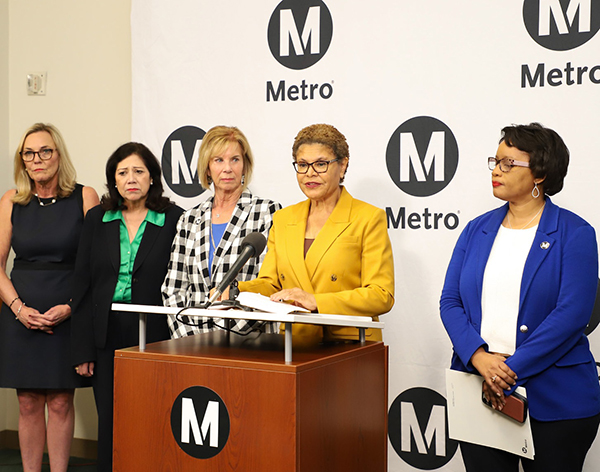Study claims downtown L.A. faces $84 billion loss from vacant offices

LOS ANGELES — Downtown Los Angeles could lose up to $84 billion in economic value over the next decade due to vacant office buildings, according to a study released Monday by a nonprofit organization advocating for property development.
Downtown Works, the advocacy arm of the Central City Association, commissioned the study that projects a $69.5 billion loss in assessed property value for the office market and $353 million in potential lost property tax revenue for the city and county. The study arrives at the $84 billion figure by adding $14 billion in what it calls “foregone gains” from limited building conversions to the $70 billion in projected losses.
The study calculated the $84 billion figure by combining projected losses from maintaining current conditions with what it termed “foregone gains” from limited building conversions. The methodology and assumptions underlying these projections were not independently verified.
The research by BAE Urban Economics analyzed the financial impact of high vacancy rates in the downtown core, where office space has struggled since the pandemic. Downtown LA’s office vacancy rate reached approximately 33% as of late 2024, according to commercial real estate reports.
“Downtown LA is hemorrhaging value,” said Nella McOsker, Downtown Works board member and president of the Central City Association.
BAE Urban Economics specializes in real estate advisory consulting and has completed over 2,100 assignments since 1986, according to the firm’s website. The study received support from architecture firm Gensler and commercial real estate company CBRE, both of which have business interests in downtown development projects.
Current downtown office vacancy rates reflect broader national trends, with office markets nationwide facing challenges from remote work policies and corporate downsizing. Fewer companies are leasing new office space in Greater Los Angeles, with businesses giving up more space than they’re taking on, according to Avison Young market reports.
The study outlined potential scenarios involving converting 10 vacant office buildings over 10 years, claiming such projects could generate $12 billion in assessed property value and $2 billion in economic activity. These projections assume successful conversion projects and market conditions that may not materialize.
The study recommends policy changes including changing building codes and providing companies financial incentives such as tax giveaways and fee waivers to encourage building conversions. These recommendations have been advocated for by the organizations that commissioned and supported the research.
Market analysts note that downtown property values and vacancy rates are not controlled by local policy decisions alone. The long-term financial projections in the study are based on many unknown factors about the future.





